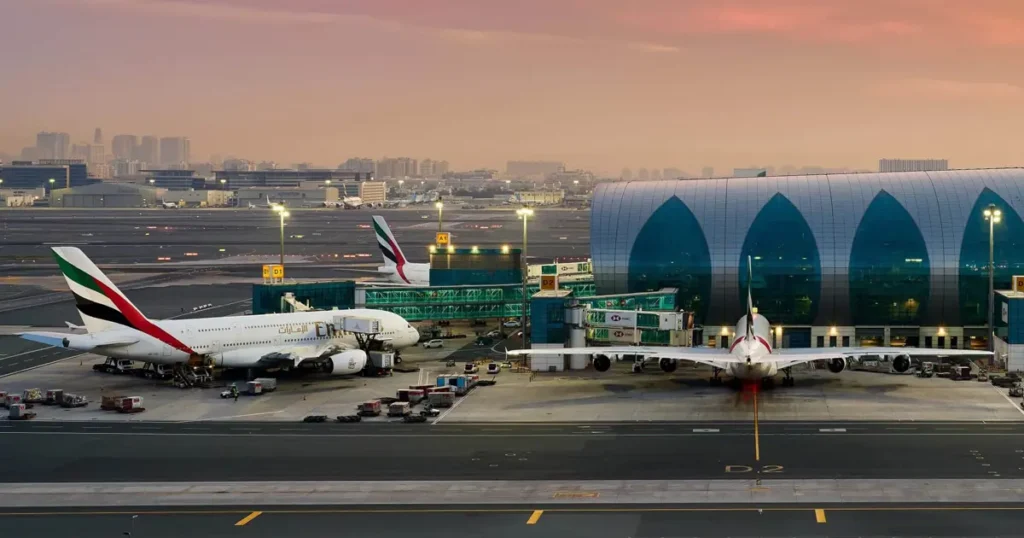Is Dubai building the biggest airport the world has ever seen?
Al Maktoum International Airport is a marvel of modern aviation. It is located in Jebel Ali, Dubai — which is also known as the Dubai World Central Airport (DWC-AMIA). This airport is a vision of the future, not just another international airport. Right now, the airport is being used for both private and commercial aviation, but the Dubai Airport has bigger plans for the air station.
The airport is located 40 kilometers south of the city of Dubai, UAE. And it was opened for cargo in 2010 and then it was opened for passengers in 2013.
Dubai’s strategic location connects Asia, Africa, and Europe, making the vision of making the airport the largest one a possibility. Currently, Al Maktoum International Airport is the secondary airport in the city to the bustling Dubai International Airport (DXB). But the thing is: the Dubai International Airport (DXB) will reach the maximum capacity of 115 million passengers by the year 2031.
Also read: Top 13 Places to Visit in Sharjah for Free with Family
Current Situation Of Al Maktoum International Airport
Today, the airport has state-of-the-art facilities with two operational runways. These runways are designed in such a way that they can handle the large aircrafts easily, including the Airbus A380. The capability of the airport sets the stage to accommodate the future advancements and growth in the world of aircrafts.
Right now, the airport has:
- Passenger terminals with modern facilities
- Advanced control towers for efficient flight management
- Dedicated cargo facilities to handle extensive freight volume
The airport not only has passenger and cargo terminal facilities, but it also offers convenience for businesses seeking logistics services. The airport’s infrastructure is well-equipped to support the high volumes of air traffic and freight.
Furthermore, the airport design is a reflection of commitment to convenience and efficiency. It has cutting-edge amenities and facilities to improve the experience of any passenger and ensure that the operations are effective. The development of the Al Maktoum International Airport is continuous, and its burgeoning as each day passes.
Also read: Sundowners in Dubai: Top Places to Enjoy the Sunset View
What Does The Future Of Al Maktoum International Airport Hold?
The future of the Al Maktoum International Airport entails being the premier global aviation hub and a seamless transfer of operations from the current largest-operating airport in the city—the Dubai International Airport (DXB) to the Al Maktoum International Airport.
The goal is to make this airport have more than 160 million passengers annually, making the airport the largest airport in the world by capacity and size. Not only that, it is on its course to have 12 million tons of cargo annually when it is fully completed around 2050.
It is going to be a whopping $35 billion project featuring five parallel runways and 400 gates. It will have phased constructions that include multiple terminals and concourses. The expansion plan of the airport is ambitious.
Also read: 10 Must-Try Gemini Prompts for Stunning Portraits on Social Media
What Is The Vision Behind Al Maktoum International Airport
Al Maktoum International Airport depicts Dubai’s seriousness towards economic growth and rapid evolution. The vision behind the airport is grand and based on the future solely. The region where this airport is located is the heart of the expanding industrial area, which makes it an important place for logistics.
The allocation of this airport in this area is not accidental but a calculated decision to boost connectivity across the continents and to help Dubai emerge as the most convenient destination for trade.
Also read: 11 Best Thriller Movies on Netflix This Month in UAE
Al Maktoum International Airport: The Goal Is Innovation
All in all, the Al Maktoum International Airport is set to enhance the experience of the passengers by offering innovation and modern facilities. It will have automated check-ins and smart security systems, the technology promises a great and exciting future. With ambitious plans of expansions, this airport would soon be the leader of airports in the world. The airport will drive the region’s connectivity and transform the Middle Eastern aviation landscape.

